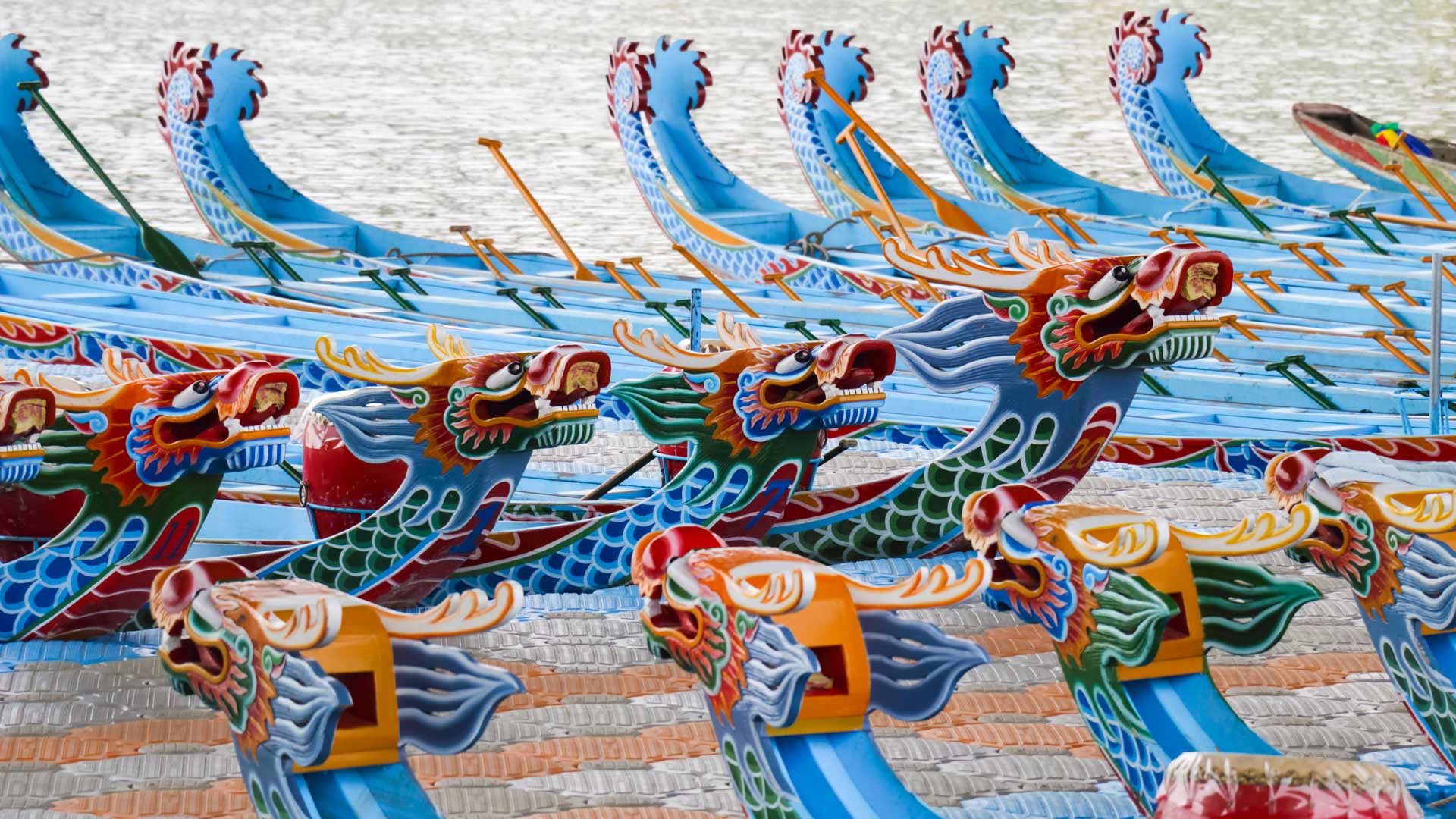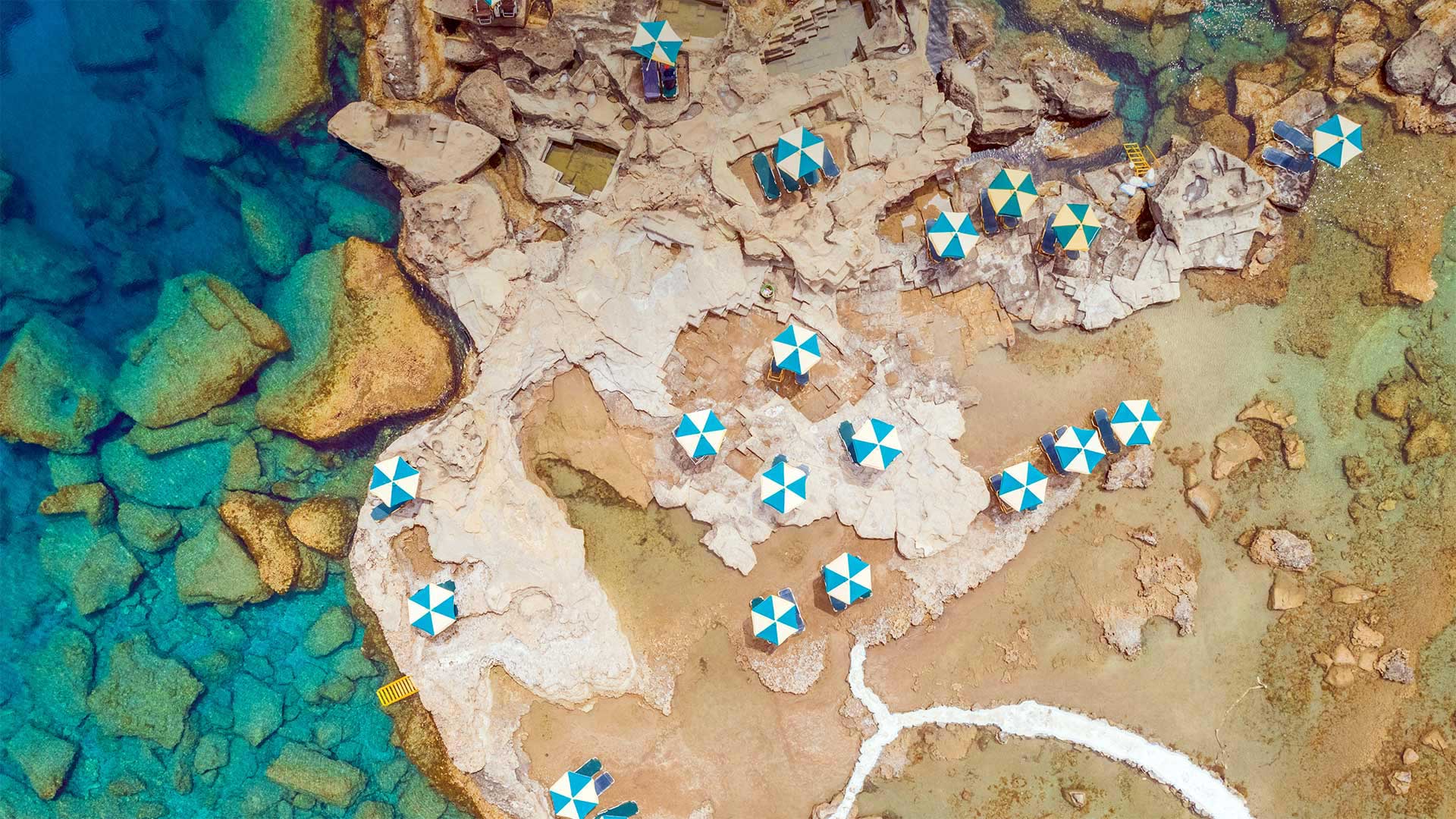German Navy tall ship Gorch Fock in waters close to Reykjavík, Iceland (© DEEPOL by plainpicture/Henn Photography)
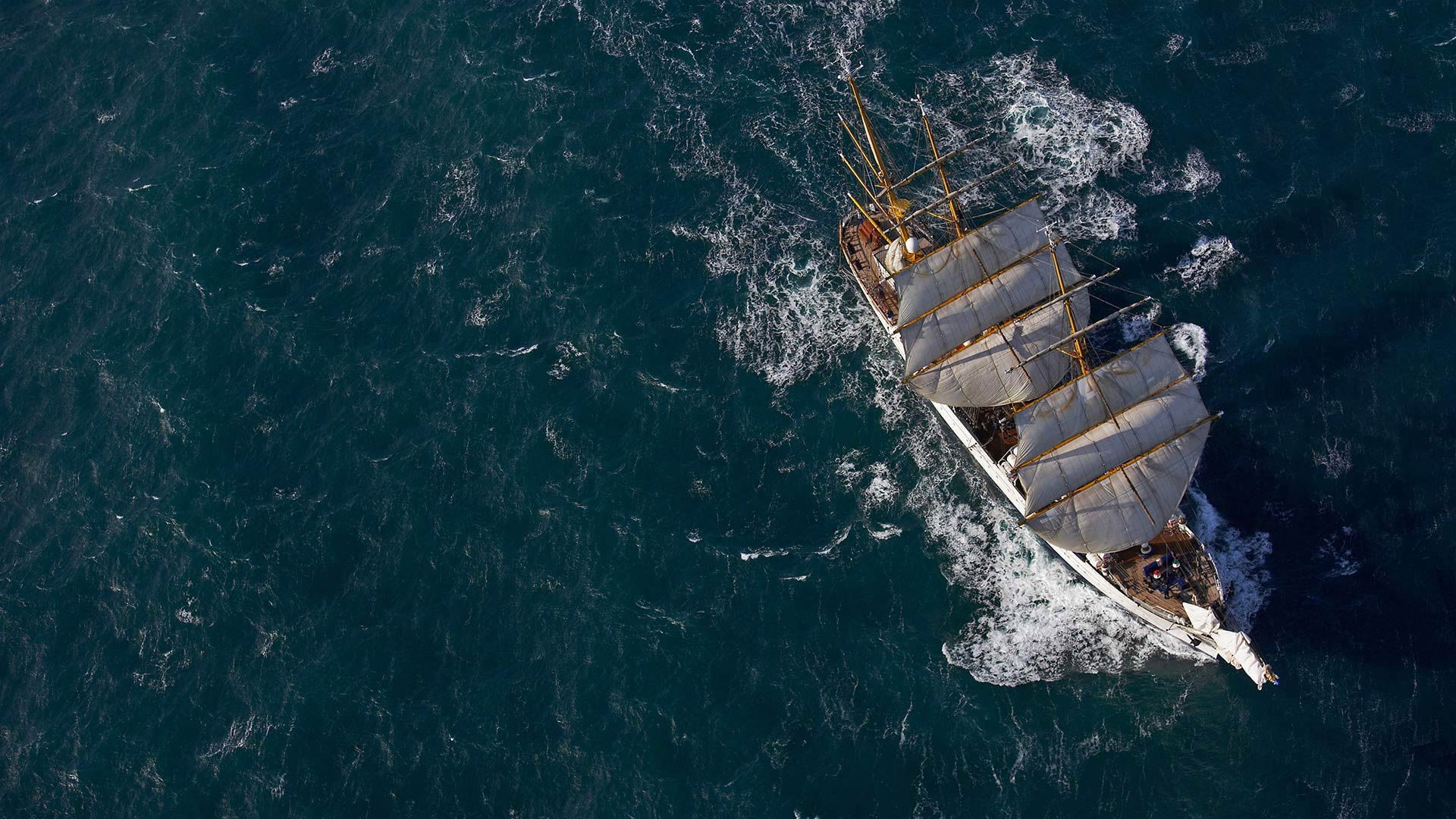
German Navy tall ship Gorch Fock in waters close to Reykjavík, Iceland (© DEEPOL by plainpicture/Henn Photography)
Hoisting a flag for seafarers
Here above the chilly seas off Iceland, we're peering down at a tall ship called the Gorch Fock—a training vessel of the German Navy. Built in 1958, it replaced the original 1933 Gorch Fock, which was seized by the Soviets in the wake of World War II (but is now back home in Stralsund, Germany, as a museum ship). Because traditionally rigged tall ships are valued as tools for learning general sailing skills, the '58 Gorch Fock is still in official service—but for much of the 21st century, it's been in and out of drydock for repairs and safety improvements.
Today marks the International Day of the Seafarer, which serves to highlight how crucial overseas shipping is to daily life around the world. The event is also intended to remind us of the bravery and sacrifice shown by sailors of all stripes as they endeavor to perform this essential function. As much as 90% of all cargo travels by sea at some point in its journey to the store or your door, so next time you encounter an old sea dog on a dark and stormy night, be sure to say thanks.
穆龙达瓦附近的格兰迪尔猴面包树林,马达加斯加 Grandidier's baobab forest near Morondava, Madagascar (© Thomas Marent/Minden Pictures)
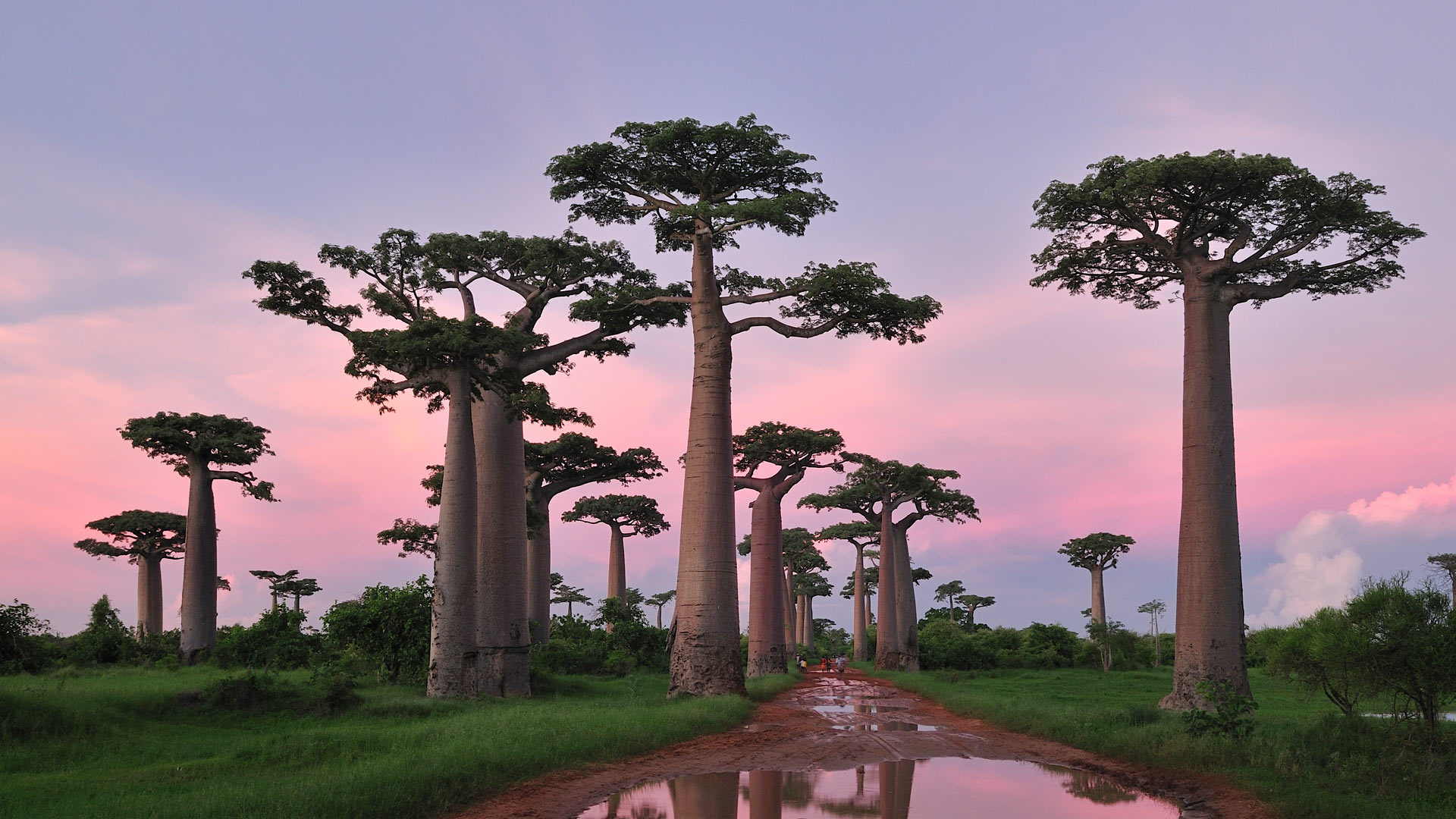
穆龙达瓦附近的格兰迪尔猴面包树林,马达加斯加 Grandidier's baobab forest near Morondava, Madagascar (© Thomas Marent/Minden Pictures)
Beautiful baobabs
Today we celebrate the island nation of Madagascar, located off the southeast coast of Africa, which became independent of France 60 years ago today, in 1960. Madagascar's national tree is the stately baobab—impossibly tall and imposing, but a little silly at the same time. In fact, its nickname is the 'upside-down tree,' since it looks like it was planted with its roots in the air. Six of the world's nine baobab species are native to Madagascar. The trees we're looking at today are the Grandidier baobab, the largest of them all, lining the Avenue of the Baobabs near the western coast.
This species can grow up to 100 feet tall and 36 feet in diameter, a measurement that can actually change as the trunks store water during rainy seasons to help them survive in times of drought. Baobabs are also known for their longevity; those growing along the Avenue of the Baobabs are estimated to be 2,800 years old. Locally, Grandidier baobabs are referred to as 'renala,' or 'mother of the forest.'
【今日端午】 (© su_pei/iStock/Getty Images Plus)
鸟瞰希腊罗德岛岩石海岸上蓝白相间的遮阳伞 (© Amazing Aerial Agency/Offset by Shutterstock)
公牛角,英国德文郡 Bull Point in Devon, England (© Robert Harding World Imagery/Offset by Shutterstock)
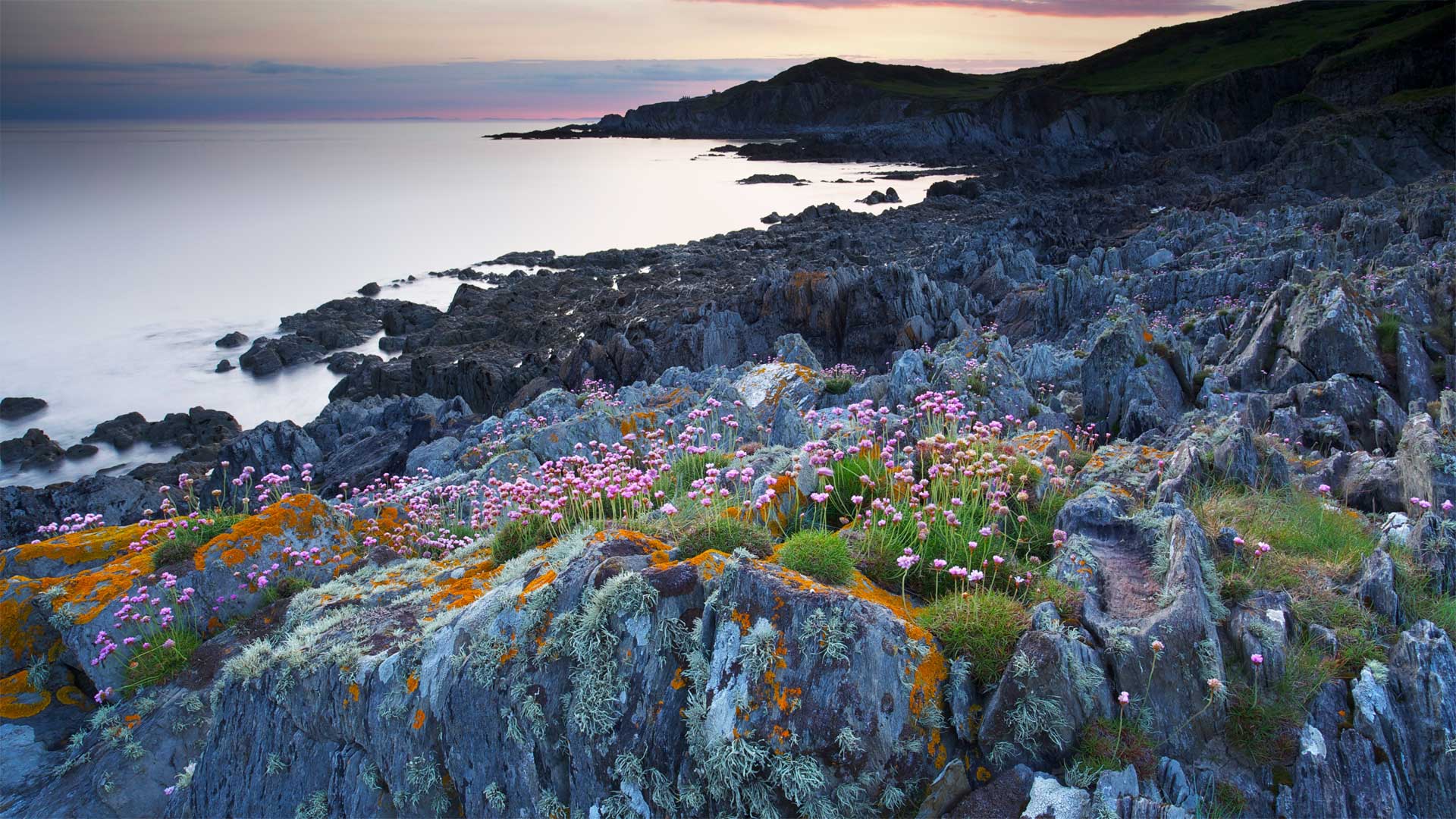
公牛角,英国德文郡 Bull Point in Devon, England (© Robert Harding World Imagery/Offset by Shutterstock)
Flowers by the sea
It might be hard to believe that this breathtaking stretch of coastline near Bull Point on the northern coast of Devon, England, was once notorious for smugglers and wreckers. Today, it's a respite from the crowds, boasting views of dramatic cliffs, rocky headlands, and sandy bays. Along these shores in summertime you can spot colorful patches of wildflowers, which have become a less common sight in the UK over the last hundred years or so. In fact, the country has lost 97% of its wildflower meadows since the 1930s as land has been turned over to grow food crops. Some once-common species like the crested-cow-wheat, spiked rampion, and man orchid, are so rare they can only be found at the edges of rural roadsides and small, family-owned farms.
Thankfully, the wildflowers pictured here, Armeria maritima, aka sea pink or sea thrift, continue to bloom among the rocky terrain. These pinkish blooms are native to coastal climates and often flourish on the sides of cliffs—and we're sure glad they still do.
Artist Saype's 'Beyond Walls' installation in the Parc de la Grange, Geneva, Switzerland (© Valentin Flauraud/Shutterstock)
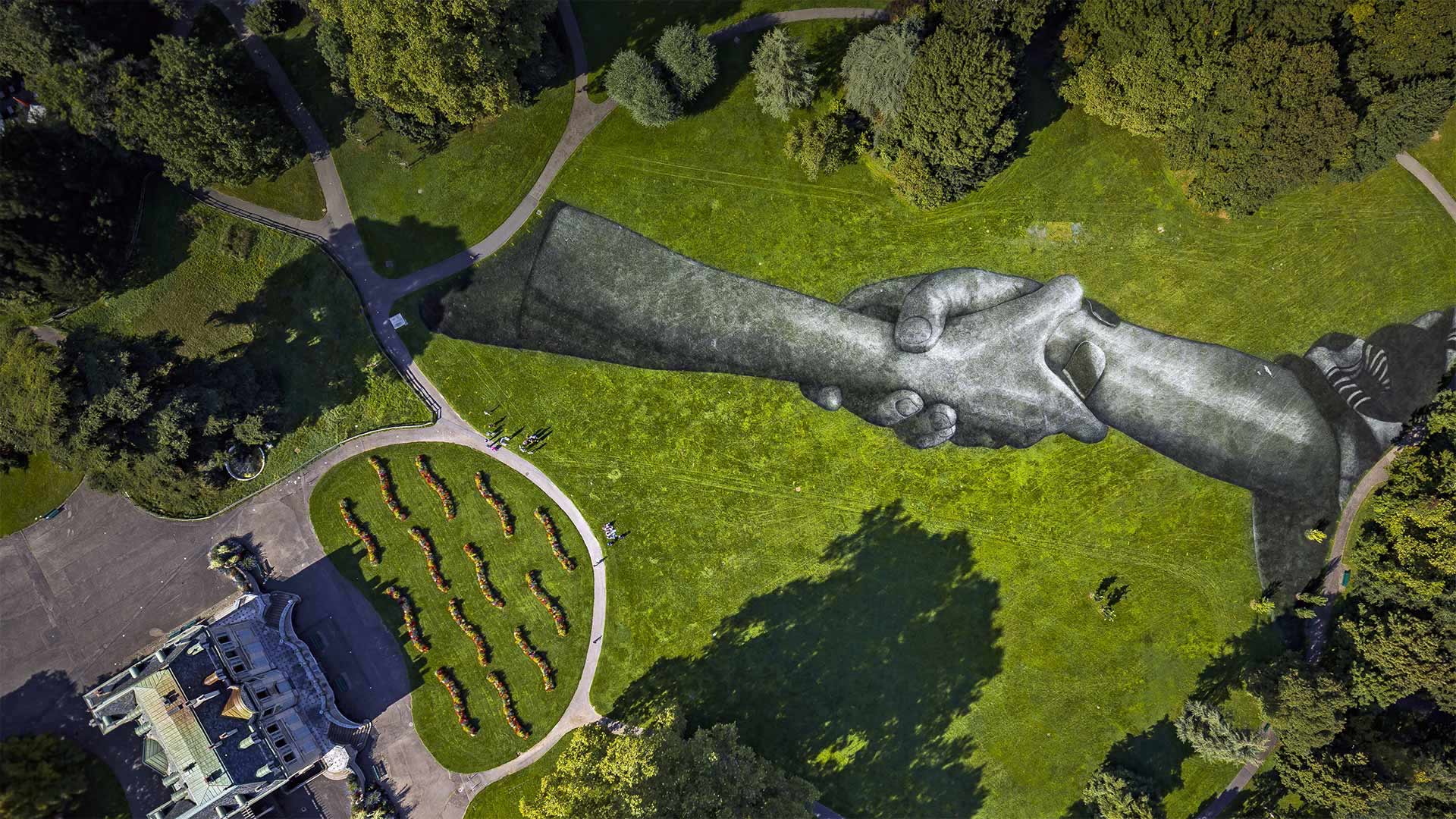
Artist Saype's 'Beyond Walls' installation in the Parc de la Grange, Geneva, Switzerland (© Valentin Flauraud/Shutterstock)
'Beyond Walls' for World Refugee Day
For World Refugee Day, we're featuring an aerial view of 'Beyond Walls,' an art installation by the French artist Saype. In the span of five years, he aims to create the longest symbolic human chain around the world by constructing outdoor designs of interlaced hands just like this in over 20 cities. The first four were completed in 2019 in Paris, Andorra, Berlin and Geneva, Switzerland, shown here.
His series hopes to promote unity and kindness, which seems an apt message for World Refugee Day. According to the United Nations, which established World Refugee Day in 2000, every minute some 20 people leave everything behind to escape war, persecution, or terror. Today's observance is intended to raise awareness of their plight.
厄勒布鲁附近湖上的仲夏之光,瑞典 Midsummer light captured at a lake near the city of Örebro, Sweden (© Anders Jorulf/Getty Images)
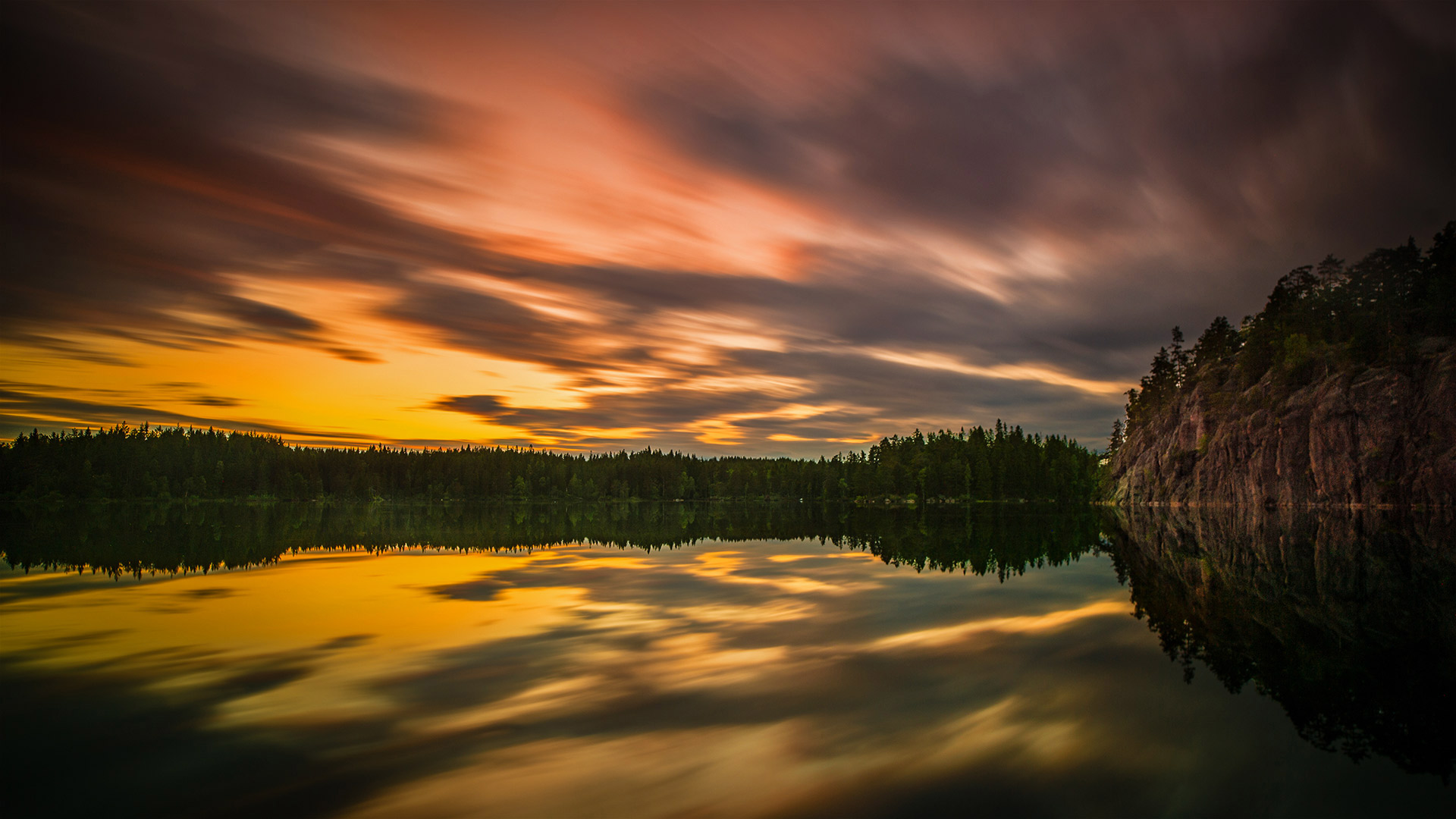
厄勒布鲁附近湖上的仲夏之光,瑞典 Midsummer light captured at a lake near the city of Örebro, Sweden (© Anders Jorulf/Getty Images)
Midsummer's Eve in Sweden
This mirrorlike lake—pictured not at dawn nor dusk, but under the tireless midnight sun that marks Scandinavian summers—lies just outside Örebro, a midsized city in south-central Sweden. To Swedes, tonight is the eve of Midsummer, a summer solstice holiday with roots in ancient, pagan Europe that's now (at least officially and to the pious) also held to honor the birth of Christian figure John the Baptist.
大峡谷哈瓦苏溪上的海狸瀑布,亚利桑那州 Beaver Falls on Havasu Creek in the Grand Canyon, Arizona (© Edwin Verin/Alamy)
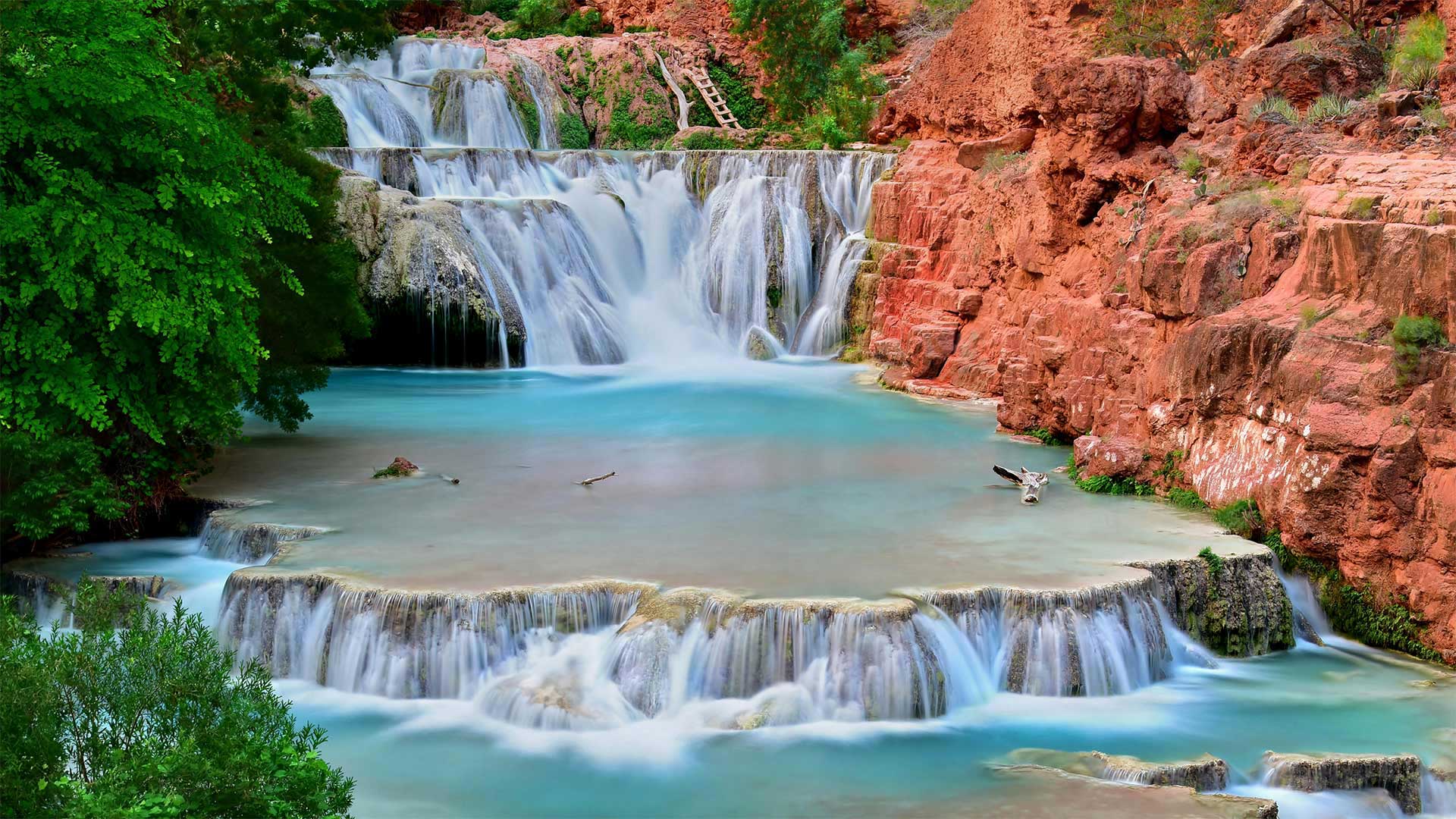
大峡谷哈瓦苏溪上的海狸瀑布,亚利桑那州 Beaver Falls on Havasu Creek in the Grand Canyon, Arizona (© Edwin Verin/Alamy)
Don't go chasing waterfalls
The stunning limestone travertine steps of Beaver Falls are the last in a series of five waterfalls along Havasu Creek, near the bottom of the Grand Canyon. The water gets its turquoise color from calcium carbonate, which reflects the beautiful hue and creates an ever-changing tableau; the minerals are deposited, moved, and redeposited to create new formations.
Getting to Beaver Falls is only for the adventurous—and lucky. First, you need a permit for Havasupai campground, which typically sell out in a day. From there, it's a 4-mile strenuous hike on rugged terrain with frequent water crossings, narrow ledges, and chains and ladders to assist when the trail gets especially precarious.
Your persistence is rewarded with pools for swimming, a natural waterslide, and stunning red rock canyon views. It's no wonder this region is sacred to the Havasupai, whose name means 'people of the blue-green water.'
都柏林的圣斯蒂芬绿地,爱尔兰 St. Stephen's Green in Dublin, Ireland (© L_E/Shutterstock)
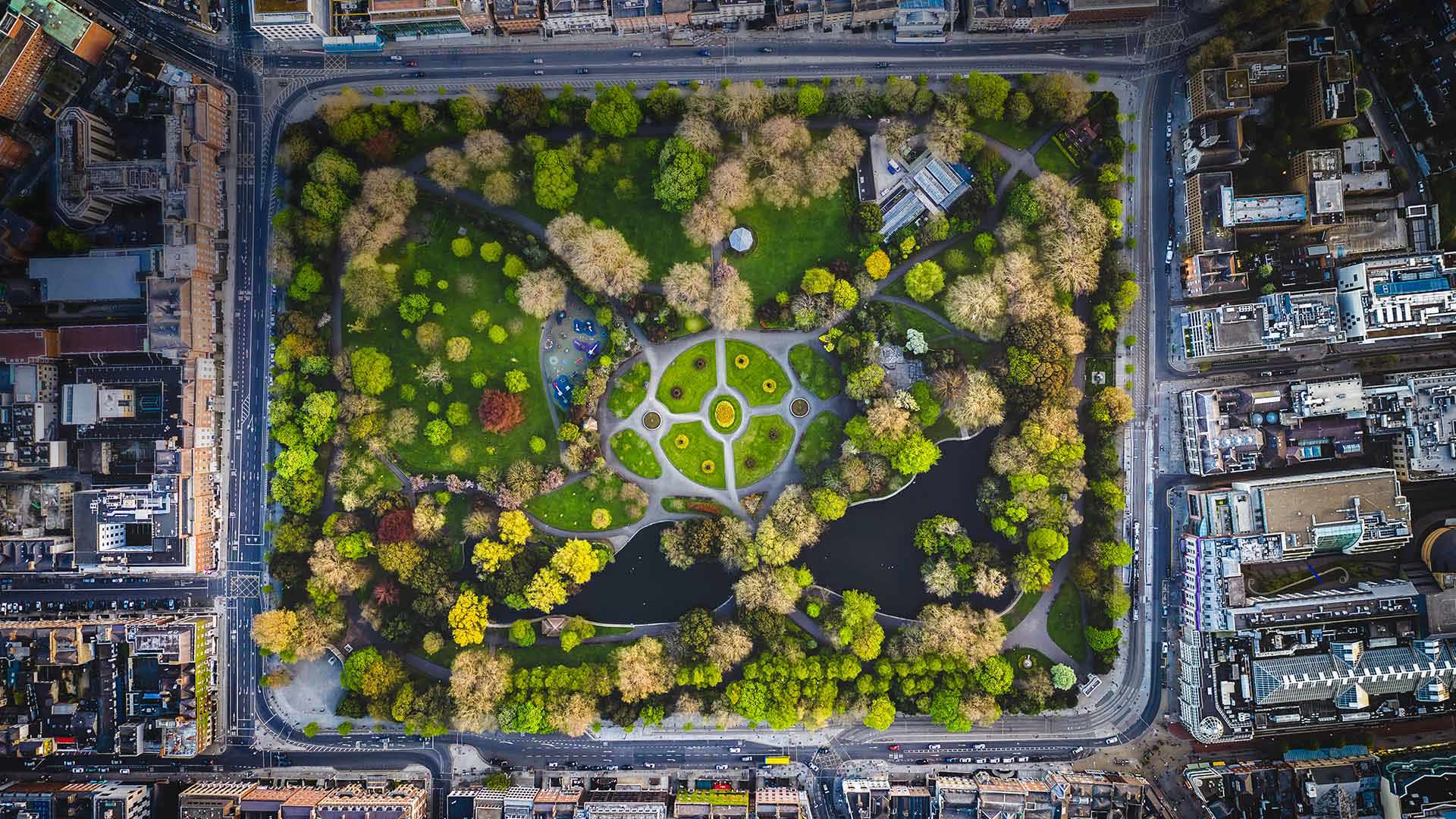
都柏林的圣斯蒂芬绿地,爱尔兰 St. Stephen's Green in Dublin, Ireland (© L_E/Shutterstock)
In the footsteps of Leopold Bloom
Today, we're looking down at St. Stephen's Green in Dublin in honor of Bloomsday, a day when people celebrate Irish author James Joyce and his famous 1922 novel 'Ulysses.' But, why today you ask? That's because the novel follows the meanderings and thoughts (and meandering thoughts) of the protagonist, Leopold Bloom, and a host of other characters—real and fictional—from 8AM on June 16, 1904, through the early hours of the next morning.
In 1924, Joyce himself mentioned in a letter that some people celebrated 'Bloom's day' on June 16, which must have amused him. Then, for the 50th anniversary of the events in the novel, a group of Irish literary figures and other 'Ulysses' enthusiasts organized a kind of a pilgrimage on June 16, 1954, ambling along the route that Bloom takes through Dublin. Bloomsday has since grown into a worldwide literary celebration. People in Dublin can follow in the characters' footsteps through the city's streets, visiting places immortalized in the novel; others may celebrate by dressing in fashion from the time, eating food mentioned in the book, and performing readings of the text.
梅德威海滩棕榈树间散步的冲浪者,印尼巴厘岛 Surfer walking between palm trees in Medewi, Bali, Indonesia (© helivideo/GettyImages)
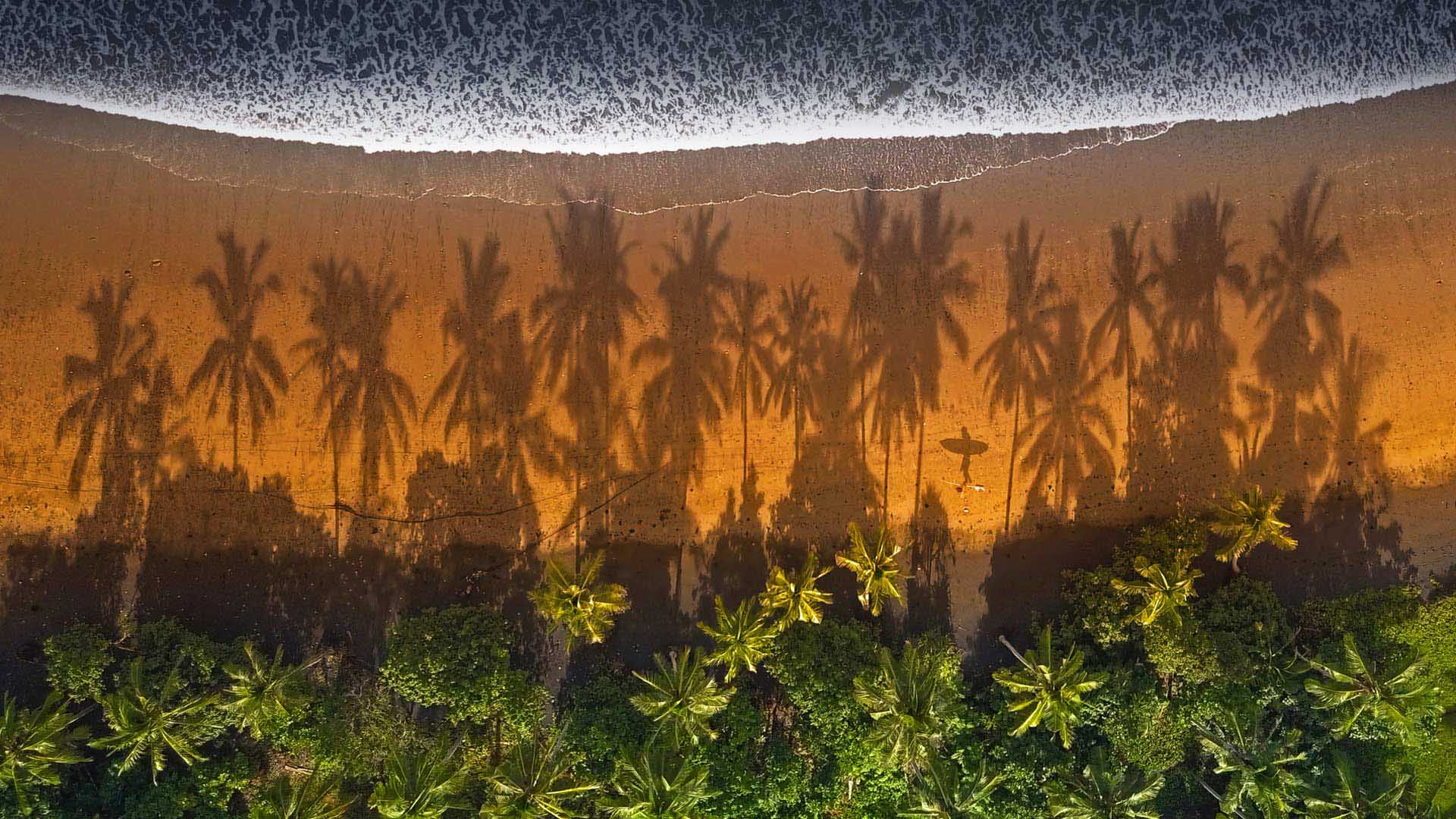
梅德威海滩棕榈树间散步的冲浪者,印尼巴厘岛 Surfer walking between palm trees in Medewi, Bali, Indonesia (© helivideo/GettyImages)
Surfer's paradise
Look closely at today's homepage image and you'll spot the shadow of a surfer, who's probably delighted to be here in Medewi, Bali. It's a favorite spot for big waves, warm water, and beautiful views. With its 13,000 islands and year-round warm water, Indonesia is a prime surfing destination. The island of Bali especially has gained a reputation as a mecca for the sport since global wave-chasers started arriving here in the 1960s and '70s. These days major surfing brands operate their Southeast Asia headquarters out of Bali. Peak surf season here usually falls between April and October, but you can get a fix anytime—just a cue up a classic surf movie filmed on the beaches of Bali, such as 'Morning of the Earth' or 'The Endless Summer 2.'
